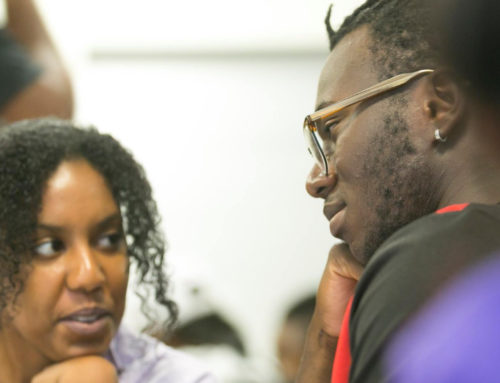Put yourself in someone else’s shoes.
You are going to meet a wide array of people throughout your personal and professional life. With the diversity of people comes many different ways of viewing the world. You will often find the views of others to be in direct conflict with some of your positions and opinions. This is naturally frustrating, and usually lends itself for the need to lash out at others and argue your own point. While a good, healthy debate is valuable, I cannot stress enough the importance of understanding the viewpoints of others and channeling that understanding in to empathy, by far one of the most powerful soft skills in your repertoire.
Effective Listening
Some people are more naturally empathetic or are more sensitive to the way others feel and are aware of their surroundings. However, no matter where you fall on the empathy spectrum, you can harness the power of empathy. The first step is to be an effective listener. Here’s an example:
Imagine yourself sitting across the dinner table from one of your best friends. You have known each other for a long time, generally get along very well, but when it comes certain subjects, you always disagree. In the past, these subjects have come up many times and the result is always a heated argument. This time, however, you try something different: as your friend begins to talk about that same old sore subject, you do not talk over him. You listen closely to each word he is saying, instead of reacting and lashing out with your own opinions. You are tempted to speak at one point, but instead, put your index finger over your mouth reminding yourself not to speak, no matter the urge you have inside to do so. As your friend continues to move forward with his argument, you continue to listen, taking mental note of points you may agree with and other points which you do not believe to be true. Once your friend is done speaking, you quietly turn to him and reiterate what you heard, noting any points of agreement. You agree to disagree on other parts of the argument and continue on with your dinner.
What just happened here? Although your friend brought up the same bothersome subject again, you instead put intention in to understanding, rather than criticizing or disagreeing with the points he made. This allows you to gain perspective, the first step towards exercising your “empathy muscle.”
Body Language
Exercising empathy also involves your ability to observe and interpret other’s body language. Being conscious of others’ body language can tell you a lot about how they are feeling. The key is to slow down and actually take the time to observe. When I enter a business meeting, I greet everyone and then immediately spend the first 30 seconds or so gauging the temperature of the room. I usually ask myself some of the following questions in order to gauge how others are feeling:
Are their arms crossed, or are they by their side?
Crossed arms may be a sign a person is disgruntled or protecting something.
Are they making direct eye contact, or looking the other way?
Avoiding eye contact may indicate a person is distracted or is feeling uncomfortable.
Are they biting their nails or fidgeting with a pen?
This may be a sign of anxiety or nerves.
Tying it All Together in the Name of Empathy
Now that you have a general understanding as to how someone might be feeling, you are officially “standing in their shoes.” Congratulations! While this is a fantastic foundation of knowledge, you need to create insights from your observations and use those insights to create strategies on how you might approach the individual now and in future interactions. If you can do so successfully, then you will not only be able to stand in someone else’s shoes but you will be able to “tie their shoes.”
Here are a couple strategies you can deploy right now in order to become more empathetic:
• If you have observed cues that an individual may be frustrated or irritated by a situation, ask questions to pinpoint the root cause of the issue.
o Questions might include, “What seems to be top of mind for you today?” or “Is there anything I might be able to help with that is bothering you?”
• If you have observed cues that someone is feeling down, you may seek to delay any sort of serious conversation to a later date.
o I find it best to move conversations of importance to a later date, when the individual is more even-keeled.
Harnessing the power of empathy takes time, repetition and practice. The key is to tailor your approach to fit the perceived current mood of the individual or individuals you are interacting with. In doing so, you avoid potentially harmful situations, and reduce the risk of coming off as insensitive. Remember, seek to understand first before you pass judgement. I ensure you will be amazed at the results.



